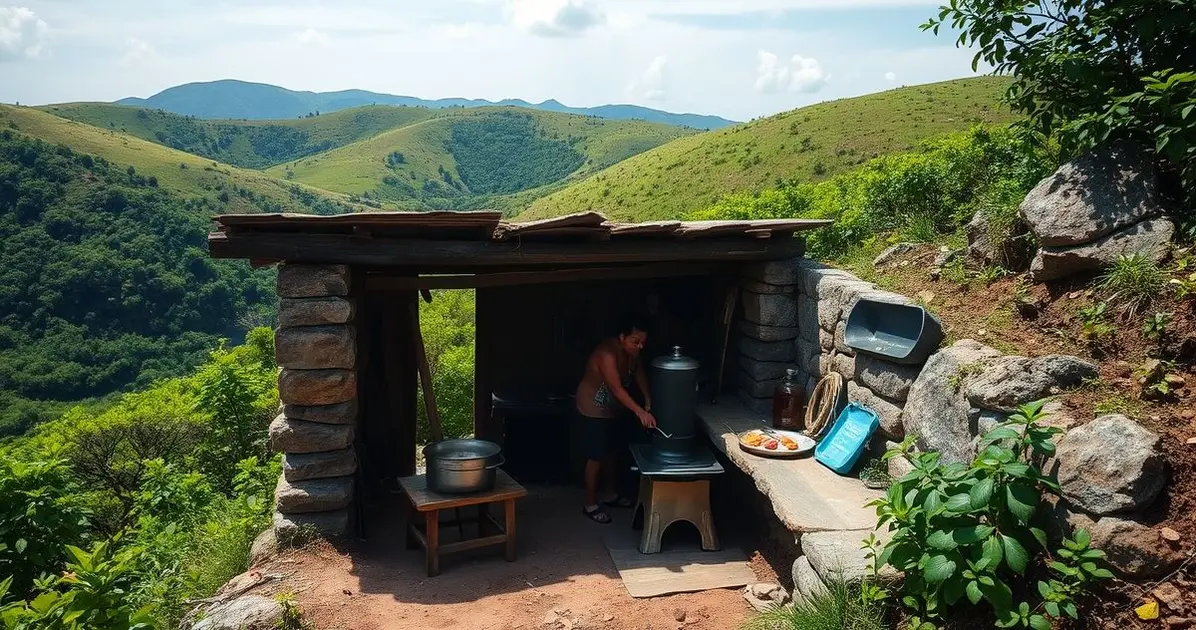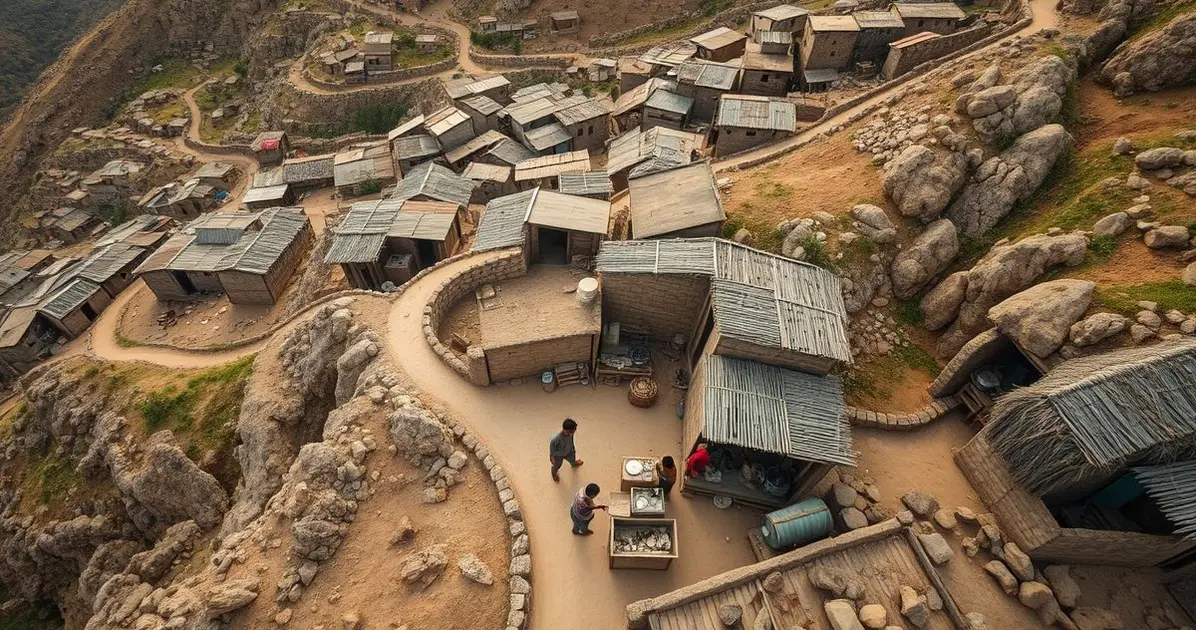Cooking in hilly areas presents unique challenges due to accessibility issues, limited resources, and the geographical landscape that complicates traditional cooking methods.
Why cooking is difficult in hilly areas

In hilly areas, cooking becomes difficult because of various factors such as transporting ingredients over steep terrain, limited access to modern amenities, and often inadequate kitchen facilities. Families may rely on traditional methods, which can be labor-intensive and time-consuming.
Limited Access to Fresh Ingredients
Limited access to fresh ingredients is one of the most significant challenges faced by those cooking in hilly areas. The geographical isolation and unique landscape of these regions can greatly impact the availability of fresh produce and other essential cooking supplies. Here’s a closer look at how this limitation affects cooking:
1. Geographical Isolation: Hilly terrains often isolate communities, making it difficult for residents to access local markets or grocery stores:
- Distance to Markets: Residents may live far from the nearest market, requiring long travel times to obtain fresh ingredients. This can be particularly challenging for those without access to reliable transportation.
- Limited Delivery Options: In remote areas, delivery services may be infrequent or unavailable, making it hard to get fresh produce delivered to homes.
2. Seasonal Availability: The availability of fresh ingredients can vary significantly with the seasons:
- Growing Conditions: Hilly regions may have shorter growing seasons due to cooler temperatures and varying altitudes, limiting the types of fruits and vegetables that can be grown locally.
- Dependence on Imports: Many communities may rely on imported goods, which can be more expensive and less fresh than locally sourced options.
3. Impact on Meal Preparation: Limited access to fresh ingredients can affect meal preparation in various ways:
- Reliance on Processed Foods: Due to the difficulty in obtaining fresh produce, residents may resort to using canned or frozen foods, which may lack the nutritional benefits and flavors of fresh ingredients.
- Limited Culinary Variety: A lack of access to diverse ingredients can restrict culinary creativity, leading to repetitive meals that may not meet nutritional needs.
4. Solutions for Accessing Fresh Ingredients: While limited access to fresh ingredients poses challenges, there are potential solutions:
- Community Gardens: Establishing community gardens can help provide fresh produce locally, fostering community engagement and food security.
- Farmers’ Markets: Supporting local farmers’ markets can improve access to fresh ingredients and promote sustainable agricultural practices.
- Cooperative Purchasing: Communities can organize cooperative purchasing groups to buy fresh produce in bulk, reducing costs and improving access.
In summary, limited access to fresh ingredients in hilly areas presents significant challenges for cooking and meal preparation. By understanding these limitations and exploring potential solutions, communities can work towards improving food access and promoting healthier cooking practices, ultimately enhancing their culinary experiences.
Transportation Challenges in Uneven Terrain
Transportation challenges in uneven terrain are a significant factor affecting cooking and food preparation in hilly areas. The geographical features of these regions can complicate the movement of goods and ingredients, leading to various obstacles. Here’s a detailed look at how uneven terrain impacts transportation:
1. Difficulty in Accessing Markets: The rugged landscape of hilly areas can make it challenging for residents to access local markets:
- Long Distances: Residents may have to travel long distances to reach grocery stores or markets, which can be time-consuming and physically demanding.
- Limited Transportation Options: In many cases, public transportation may be scarce, forcing individuals to rely on personal vehicles or carry heavy loads on foot.
2. Carrying Supplies: The uneven terrain poses additional challenges when carrying cooking supplies and ingredients:
- Physical Strain: Transporting groceries or cooking supplies over steep inclines can be physically taxing, especially for those without access to vehicles.
- Limited Access to Fuel: Accessing cooking fuel, such as gas or firewood, can also be difficult in hilly regions, complicating meal preparation.
3. Weather-Related Challenges: The weather can exacerbate transportation issues in hilly areas:
- Rain and Mud: Heavy rainfall can lead to muddy paths, making it difficult to transport goods safely. Slippery conditions can increase the risk of accidents and injuries.
- Snow and Ice: In colder climates, snow and ice can further hinder access to markets and make transportation more dangerous.
4. Solutions to Transportation Challenges: While transportation challenges in uneven terrain can be significant, there are potential solutions to improve access to cooking supplies:
- Community Support: Organizing community transportation services or shared rides can help residents access markets more easily.
- Local Sourcing: Encouraging local sourcing of ingredients through community gardens or farmers’ markets can reduce the need for long-distance travel.
- Improved Infrastructure: Advocating for better road maintenance and infrastructure development can enhance access and safety for residents in hilly areas.
In summary, transportation challenges in uneven terrain significantly affect cooking and food access in hilly regions. By understanding these obstacles and exploring potential solutions, communities can work towards improving access to fresh ingredients and cooking supplies, ultimately enhancing their culinary experiences.

Impact of High Altitudes on Cooking Times
The impact of high altitudes on cooking times is a crucial consideration for anyone living or cooking in elevated regions. As altitude increases, several factors come into play that can significantly affect the cooking process. Here’s a detailed look at how high altitudes influence cooking times:
1. Decreased Atmospheric Pressure: At higher altitudes, the atmospheric pressure is lower than at sea level. This reduction in pressure affects the boiling point of water:
- Lower Boiling Point: Water boils at 212°F (100°C) at sea level, but at higher altitudes, the boiling point decreases. For example, at 5,000 feet (1,524 meters), water boils at approximately 202°F (94°C). This means that foods cooked in boiling water may take longer to cook through.
2. Longer Cooking Times: Because water boils at a lower temperature at high altitudes, foods that rely on boiling or simmering may require longer cooking times:
- Cooking Pasta and Grains: When cooking pasta or grains, the lower boiling point means they may not cook as thoroughly or quickly as they would at sea level, requiring adjustments in cooking time.
- Meat and Vegetables: Similarly, meats and vegetables may take longer to become tender when cooked at high altitudes, as the lower temperature affects the cooking process.
3. Adjusting Cooking Methods: To compensate for the impact of high altitudes on cooking times, some adjustments may be necessary:
- Increase Cooking Time: When cooking at high altitudes, it is often necessary to increase cooking times for boiling, steaming, and baking to ensure that food is fully cooked.
- Pressure Cooking: Using a pressure cooker can be an effective solution, as it allows food to be cooked at higher temperatures, reducing cooking times significantly.
4. Testing for Doneness: At high altitudes, it’s essential to test for doneness more frequently:
- Use a Thermometer: For meats, use a meat thermometer to ensure that the internal temperature reaches safe levels, as visual cues may not be as reliable at high altitudes.
- Taste and Texture: For other foods, tasting and checking texture can help determine if they are cooked through, as cooking times can vary widely.
In summary, the impact of high altitudes on cooking times is significant due to decreased atmospheric pressure and the resulting lower boiling point of water. By understanding these effects and making necessary adjustments, cooks can successfully prepare delicious meals even in elevated regions. Embracing these considerations allows for a more enjoyable cooking experience, regardless of altitude.
Climate Variability and Its Effects on Cooking
Climate variability can have significant effects on cooking practices, particularly in regions where weather patterns fluctuate dramatically. Understanding how climate impacts cooking can help home cooks adapt their techniques and ingredient choices to achieve the best results. Here’s a closer look at the effects of climate variability on cooking:
1. Seasonal Ingredient Availability: Climate variability affects the growing seasons of various fruits and vegetables, which can impact their availability:
- Fresh Produce: Inconsistent weather patterns can lead to early or late harvests, affecting the freshness and quality of seasonal produce. This variability may require cooks to adapt their recipes based on what is available.
- Local Sourcing: Understanding local growing conditions can help cooks make informed decisions about which ingredients to use at different times of the year, promoting sustainability and supporting local farmers.
2. Cooking Techniques and Methods: Changes in climate can influence the cooking methods that are most effective:
- High Humidity: In humid conditions, moisture can affect cooking times and methods. For example, baking may require adjustments in temperature and timing to achieve the desired texture.
- Cold Weather Cooking: In colder climates, hearty, warming meals are often favored. Cooking methods such as slow cooking and braising become popular during winter months, as they provide comfort and warmth.
3. Impact on Cooking Times: Climate conditions can also affect cooking times:
- High Altitude Considerations: In high-altitude areas, lower atmospheric pressure can lead to longer cooking times, as water boils at a lower temperature. This requires adjustments in recipes and cooking techniques.
- Temperature Variations: In regions with fluctuating temperatures, cooks may need to adapt their cooking times and methods based on the current climate conditions.
4. Food Preservation Challenges: Climate variability can impact food preservation methods as well:
- Humidity and Storage: High humidity can affect how food is stored, leading to spoilage if not managed properly. Cooks may need to adjust their food preservation techniques based on seasonal humidity levels.
- Temperature Fluctuations: Inconsistent temperatures can impact the effectiveness of refrigeration and freezing, requiring cooks to be more vigilant about food safety.
In summary, climate variability has a profound impact on cooking practices, from the availability of ingredients to the methods used in the kitchen. By understanding these effects, home cooks can adapt their techniques, make informed ingredient choices, and ensure that their cooking remains enjoyable and effective, regardless of the weather conditions. Embracing these considerations allows for a more resilient approach to cooking that celebrates seasonal ingredients and adapts to changing climates.
Conclusion
In conclusion, climate variability significantly influences cooking practices, affecting everything from ingredient availability to cooking methods and times.
Understanding these impacts allows home cooks to adapt their techniques and make informed choices that enhance their culinary experience.
Seasonal changes can dictate which fresh produce is available, encouraging cooks to embrace local and seasonal ingredients.
Furthermore, variations in humidity and temperature can affect cooking times and methods, requiring adjustments to achieve the desired results.
By being aware of how climate conditions impact cooking, individuals can foster resilience in their culinary practices, making the most of what is available while ensuring food safety and quality.
Ultimately, adapting to climate variability not only enriches the cooking experience but also promotes sustainability and appreciation for the natural rhythms of food production.
FAQ – Frequently Asked Questions about Cooking and Climate Variability
How does climate variability affect ingredient availability?
Climate variability can lead to changes in growing seasons, impacting the availability and freshness of seasonal produce.
What cooking techniques are influenced by climate conditions?
High humidity may require adjustments in baking, while colder climates may favor hearty meals and slow cooking methods.
How do high altitudes affect cooking times?
At high altitudes, lower atmospheric pressure results in longer cooking times, as water boils at a lower temperature.
What challenges does humidity pose for food preservation?
High humidity can lead to spoilage if food is not stored properly, requiring adjustments in food preservation techniques.
How can cooks adapt to changing climate conditions?
Cooks can adapt by using seasonal ingredients, adjusting cooking times and methods, and being vigilant about food safety.
What are some benefits of understanding climate impacts on cooking?
Understanding these impacts allows for a more resilient cooking approach, promoting sustainability and enhancing the overall culinary experience.
See more
Discover plenty of easy and delicious recipes you can make at home, from hearty dinners to indulgent desserts and wholesome breakfasts.




